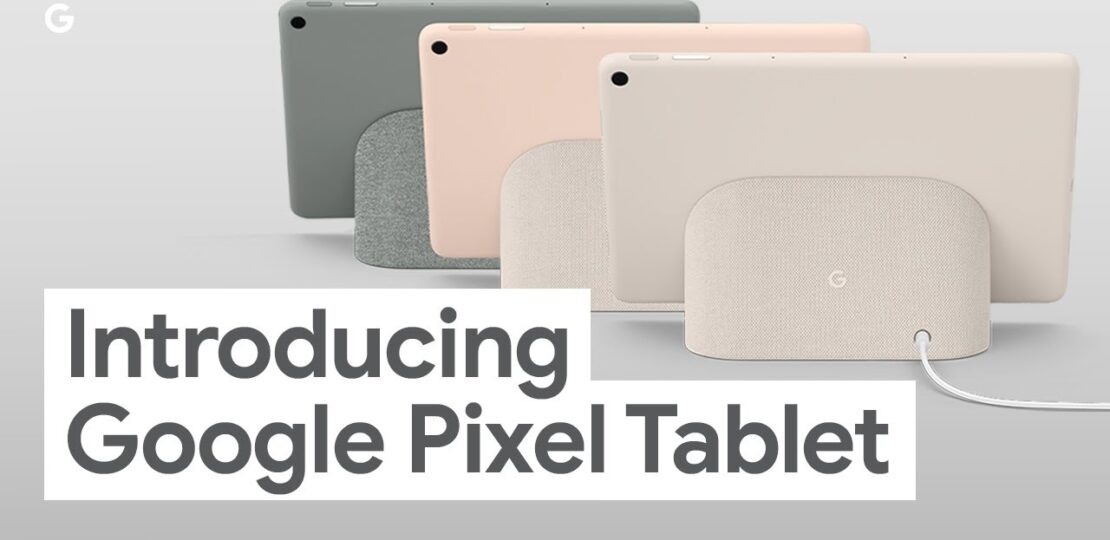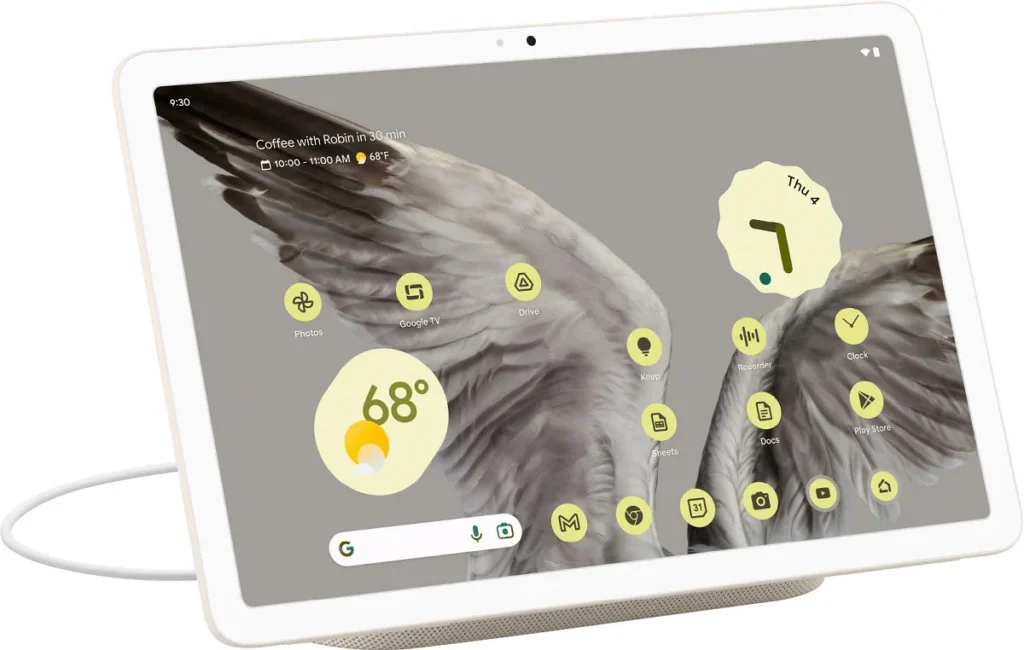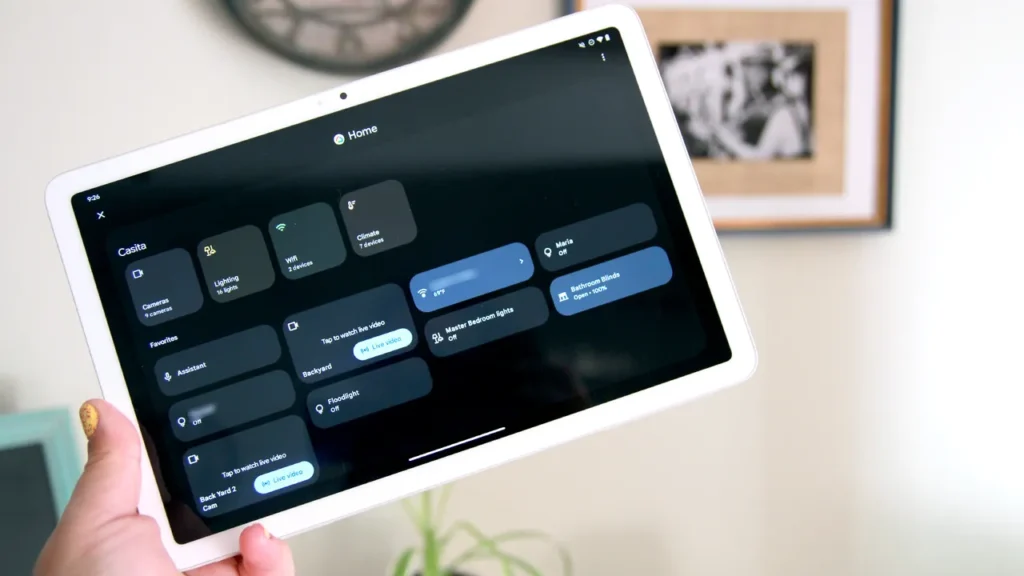Is the Pixel Tablet Worth It? A Comprehensive Review
January 13, 2025 | by ranazsohail@gmail.com

Alright, here’s the thing—I’m about to sound really old for a moment, but stick with me. About 10 years ago, there was a whole world of tablets. There were tons of options—iPads vs. Android tablets, and a whole bunch of debates around them. We had small tablets, big tablets, and Android tablets were mostly defined by Google’s Nexus lineup. The Nexus 7 was a huge hit, and the Nexus 10 had this cult following. But then, Google kind of lost its way with Android tablets, then tried a few things with Chrome OS tablets, but they made some duds. Eventually, they just gave up and stopped making tablets altogether.
But here’s the twist: something else has been picking up speed ever since—smart home displays. Google bought Nest, and we saw the Nest Hub and Nest Hub Max. This whole category has been growing every month. At some point, Google probably thought, “Hold on, we’re making all these smart home displays, which are essentially just budget tablets. What if we just made a cheap tablet that could also double as a smart home display?” And that’s how the Pixel Tablet came to be.
I’ve been using this tablet for a few weeks now, and honestly, it’s not super flashy or high-end. It’s not the most exciting thing in the world, and neither are most smart home displays. But it’s interesting, and honestly, it’s a bit underrated for what it could mean for future tablets. Let’s break it down.
As a tablet, it’s pretty basic. I really like the soft-touch back. This one’s in the Porcelain color, and it does a great job of hiding fingerprints. It feels solid in the hand, and even though it’s made of metal, you wouldn’t really know it because of the smooth coating. The design is straightforward—just a single camera in the back corner, volume buttons, and the power button that also doubles as a fingerprint reader. The speakers on the sides sound fine, but there’s really no bass to speak of. The USB-C port is on the left, and overall, it’s lightweight and not too bulky.

The tablet features an 11-inch LCD display with a 2560 x 1600 resolution at 60Hz. The bezels are slim enough not to be distracting, but the screen isn’t especially bright or fast. It runs the same Tensor G2 chip as the Pixel 7, but it doesn’t feel particularly snappy. It’s unclear if the chip is underclocked, but the performance is more like a mid-range Android tablet. At $499, this device comes with a dock in the box, which is an additional $130 if bought separately.
Set your expectations accordingly. It works fine and does what it’s meant to, but it’s not a speed demon. The included speaker dock is a nice bonus, and it’s actually the only way to charge the tablet. There’s no USB-C cable in the box—just the dock, which connects to the wall via a barrel connector. The dock is simple, really just a speaker with some retractable pins that connect to the tablet.
There are magnets in both the tablet and the dock, so when you place the tablet on it, the magnets align, and the pins provide both power and data. It’s a quick, easy connection—no Bluetooth pairing needed, much like attaching an iPad to a keyboard. The tablet sits at a good angle on the dock, standing upright like a Nest Hub. The magnets are strong enough to detach the tablet with one hand.
I’m happy the dock comes in the box rather than as an extra purchase. That said, the charging speed is capped at 15W, which is pretty slow for a tablet with such a large battery. Charging takes a while. The dock’s speaker isn’t anything special either—it’s comparable to the Nest Hub Mini at best.
The tablet’s speakers, like I mentioned, are fine but they really lack bass. When you dock it, you get about 20-30% more volume, but it’s mostly just adding back the bass. It’s not super loud, though. It’s all about that low-end, and the transition is really quick—once you pop it off, it goes right back to the tablet’s speakers. Honestly, it’s fine, but not exactly impressive.
The dock can’t be used as a Bluetooth speaker or for anything else when the tablet’s not attached, so it’s kind of a one-trick pony. But honestly, I don’t think you’d really want to use it for anything else. It just sits there, waiting for the tablet to be connected.
What’s interesting is that the dock helps with battery life. The tablet had decent battery performance, but its standby life was a little weak—it’d sometimes lose like 10% overnight, which could be a bug. The idea is that when you’re done using it, you pop it on the dock, and it becomes a smart speaker.
You could technically buy another dock and put it in another room, like the kitchen or bedroom, and it would show different things depending on where it is. But at $130 per dock, it’s starting to feel a bit overpriced, especially when you compare it to the tablet itself. Just be aware of that.
But overall, I realized the dock feature is cool, but it’s not the most exciting thing about this tablet. Sure, it’s the main selling point, but for me, the real intrigue lies in the software. What Google does with Android on tablets could really shape how they approach tablets going forward, and I’m curious to see how it evolves.
First off, I really love the new software dock. The home button at the bottom allows you to swipe up at any time, and all the usual gestures are still there. But there’s also a new gesture: if you swipe up slightly from the bottom bar, a dock appears with the same apps that are in your home screen dock. This dock also shows up when you’re multitasking. From here, you can quickly switch to a recent app or start multitasking by dragging an app to take up half the screen. It’s smooth, easy to use, and perfect for jumping back and forth between apps. I’ve been using it constantly, and it works like a charm.
Next, the multi-user support is fantastic—it’s something the iPad should definitely take notes on. You can switch between users at any time, whether it’s from the notification tray, lock screen, or anywhere your profile picture shows up. Setting up a new user is just like setting up a fresh tablet, and they can sign into their apps and customize their home screen and widgets. Switching between profiles is as easy as using your fingerprint. It’s exactly as simple as it should be.
This feature is perfect for managing personal profiles—like one for personal use and one for work—so nothing ever gets mixed up. You could also set up profiles for specific needs, like temporary or burner accounts. Tablets are often shared at home, so the ability to quickly log into a kid’s account without worrying about accidental purchases (like $30,000 worth of Minecraft credits) is a game-changer.
Finally, there’s Hub Mode. This kicks in when you dock the device, and it turns your tablet into a smart hub. When it’s docked, I mostly use it for voice commands. It displays the clock, a rotating photo gallery, or artwork, and gives quick access to smart home controls. It usually stays on my kitchen counter, and I barely need to touch it—it’s super functional and convenient.
Here’s a fun tidbit: this is actually the first tablet with Chromecast built in, so you can cast content to other devices. Personally, I’m not sure I’d use that feature, but hey, it’s there if you want it.
Now, let’s talk about the app situation. This is something we always discuss when it comes to Android tablets, and with this version, there was a lot of hope that we’d see more apps optimized for the larger screen. Unfortunately, that hasn’t really happened—well, a little, but not as much as we’d hoped.
On the plus side, Google has fully optimized its own apps for this tablet, so when you open something like Gmail or Google Photos, it looks great. That’s definitely a win. But when it comes to third-party apps—things you’d actually use every day—it’s a bit of a letdown.
A lot of the popular apps—Instagram, Twitter, TikTok, Tesla, and more—are just scaled-up versions of their phone apps. It’s the same with apps like SoundCloud, Pocket Casts, OverDrive, and even weather apps. They’re all essentially just phone apps stretched to fit the bigger screen. Some apps let you slide content to the side for easier one-handed use, but that’s about it.
The bottom line is that Android tablets still face a big challenge with apps. Developers usually stick with what’s easier for them, which means creating a universal app that works on all iPads. For Android, though, making an app work well across different devices isn’t as straightforward, so there’s less motivation for developers to fully optimize for tablets.

Actually, there’s one app that Google can claim they got right before the iPad, and that’s the calculator. They’ve built a fully-featured one—not scientific, but a solid all-purpose calculator. It’s got a history feature, the readout is adjustable in size, and you can switch between light and dark themes. It’s well done. Over to you, Apple.
A few other random notes I didn’t get to in the main review: when the tablet’s docked to charge, it tops out at 90% by default instead of charging all the way to 100%. I think that’s actually a smart move—it helps extend battery life. Also, just so you know, there’s no headphone jack on this device. And the camera? It’s decent—good enough for video calls and scanning documents, but it’s not something you’d use for shooting high-quality video.
In the end, here’s my take: two-in-one devices often have a trade-off. They usually do one thing a little worse than the other. This one’s a combination tablet and smart home hub. So I wondered, where’s the compromise? Is it better as a tablet or a speaker dock? The answer is: it’s a solid, affordable Android tablet, and a slightly underwhelming speaker dock/home hub. But that’s fine. Both functions are simple enough that it works overall.
Personally, I’d love to see a high-end version of this. Imagine a 120Hz screen, fast performance, and a premium build, with the ability to dock on a killer speaker and turn into a high-end sound system. But I know that would be much more expensive, and probably only appeal to a small group of people. So, this more budget-friendly version makes sense, and I think it could do pretty well. We’ll see how it fares.
RELATED POSTS
View all


